
CHINA OCEAN ENGINEERING
Scope & Guideline
Transforming Ocean Challenges into Engineering Solutions
Introduction
Aims and Scopes
- Hydrodynamic Analysis and Modeling:
The journal addresses hydrodynamic phenomena through numerical and experimental simulations, focusing on the interactions between waves, currents, and marine structures. - Offshore Renewable Energy Systems:
Research on offshore wind turbines, wave energy converters, and hybrid energy systems is a core focus, aiming to optimize energy extraction and efficiency in marine environments. - Structural Integrity and Safety Assessments:
The journal publishes studies on the mechanical performance and failure modes of marine structures, including pipelines, foundations, and floating platforms under various environmental loads. - Environmental and Ecological Engineering:
Research related to the environmental impacts of marine engineering projects, including sediment transport, biofouling prevention, and sustainable design practices. - Numerical and Experimental Methods:
A strong emphasis on innovative computational techniques and experimental methodologies for analyzing marine engineering challenges, including fluid-structure interaction and dynamic response analysis.
Trending and Emerging
- Smart and Autonomous Marine Systems:
Increasing research on autonomous underwater vehicles (AUVs) and smart marine systems highlights the trend towards automation and intelligent systems in ocean engineering. - Hybrid Energy Solutions:
A growing focus on hybrid energy systems that combine wind, wave, and other renewable energy sources is evident, driven by the need for sustainable energy solutions in offshore environments. - Climate Resilience and Adaptation:
Research addressing the resilience of marine structures to climate change impacts, including increased storm intensity and sea-level rise, is becoming increasingly prominent. - Advanced Materials and Construction Techniques:
There is a notable trend towards the development and application of new materials and innovative construction methods to enhance the performance and longevity of marine structures. - Data-Driven Approaches and AI in Marine Engineering:
The integration of artificial intelligence and machine learning techniques in marine engineering research is expanding, particularly in predictive maintenance and optimization of marine systems.
Declining or Waning
- Traditional Marine Structures:
Research on conventional marine structures such as fixed piers and docks has decreased, possibly due to a shift towards more innovative and flexible solutions like floating structures. - Static Marine Engineering:
There is a noticeable decline in studies focused on static analysis of marine structures as the field increasingly emphasizes dynamic responses and adaptability. - Conventional Wave Energy Conversion:
The exploration of traditional wave energy conversion technologies appears to be waning, with a shift towards more advanced hybrid systems and novel technologies. - Marine Pollution Control Technologies:
Fewer papers are being published on conventional technologies for marine pollution control, indicating a potential shift towards integrated environmental management approaches. - Ice Interaction Studies:
Research specifically addressing the interactions of marine structures with ice has diminished, potentially due to the focus on other pressing engineering challenges in warmer climates.
Similar Journals
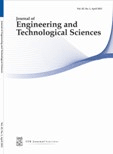
Journal of Engineering and Technological Sciences
Exploring Solutions for a Sustainable FutureJournal of Engineering and Technological Sciences, published by ITB JOURNAL PUBL, is a prominent open-access journal dedicated to advancing knowledge in various engineering disciplines and applied sciences. With an impact factor that highlights its growing influence, this journal supports a broad scope of topics, including Chemical Engineering, Civil and Structural Engineering, Earth-Surface Processes, Environmental Science, and Materials Science, as well as Mechanical Engineering. The journal has been sharing impactful research since 2013 and continues to bridge gaps between theory and practical application within the engineering community. Leveraging its Q2 and Q3 category quartile rankings in key engineering fields and solid standings in Scopus rankings, it provides a vital platform for researchers, practitioners, and students alike. Based in Indonesia, at the LPPM ITB Rectorate Building in Bandung, the journal emphasizes global contributions and innovations in engineering, making it an essential resource for cutting-edge research worldwide.
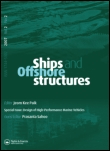
Ships and Offshore Structures
Elevating Research Standards in Marine TechnologyShips and Offshore Structures, published by Taylor & Francis Ltd, is a premier academic journal dedicated to advancing research in the fields of mechanical and ocean engineering. With an esteemed ISSN of 1744-5302 and an E-ISSN of 1754-212X, this journal has established a strong reputation, reflected in its Q2 ranking in both the Mechanical Engineering and Ocean Engineering categories, as well as its impressive Scopus rankings. The journal provides a platform for the publication of high-quality, peer-reviewed articles that address innovative design, construction, and operational challenges faced in the maritime and offshore industries. Although the journal does not currently offer open access, its accessibility through institutional subscriptions ensures that it remains a valuable resource for researchers, professionals, and students alike. By fostering interdisciplinary dialogue and disseminating cutting-edge research, Ships and Offshore Structures plays a crucial role in shaping the future of marine technology and engineering practices on a global scale.
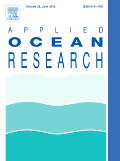
APPLIED OCEAN RESEARCH
Empowering Solutions for a Sustainable Ocean FutureApplied Ocean Research, published by Elsevier Scientific Ltd, stands as a premier journal in the field of ocean engineering, with an impressive impact factor derived from its esteemed reputation and contributions to the discipline. Having been established in 1979, the journal has continually provided a platform for groundbreaking research, fostering innovation and advancement in applied ocean science through a diverse array of topics, including marine technology, coastal engineering, and ocean energy. Currently holding a prestigious Q1 ranking in the Scopus category of Ocean Engineering, with a rank of 10 out of 105 and a notable 90th percentile, Applied Ocean Research is a vital resource for researchers, professionals, and students dedicated to understanding and solving complex challenges linked to ocean environments. Although it provides subscription-based access, the depth and quality of research featured make it a key reference point for those in academia and industry alike. Located in the heart of London, this journal embodies a commitment to excellence in the study of ocean phenomena, positioning itself as a critical conduit for knowledge dissemination and professional growth in this dynamic field.
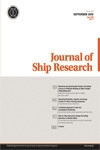
JOURNAL OF SHIP RESEARCH
Advancing maritime innovation through cutting-edge research.JOURNAL OF SHIP RESEARCH is a premier publication in the field of marine engineering and naval architecture, published by the Society of Naval Architects and Marine Engineers. With a focus on advancing the science and practice of ship design and construction, this journal has become a vital resource for researchers, professionals, and students alike. The journal spans a historical range since its inception in 1969 and provides critical insights and advancements in various related disciplines, highlighted by its strong quartile rankings in Applied Mathematics and Ocean Engineering as of 2023. Although not an open-access publication, it offers valuable research papers that are influential in shaping engineering practices and methodologies across the globe. With an ISSN of 0022-4502 and an E-ISSN of 1542-0604, the journal is available to a broad audience, providing essential knowledge that bridges theory and practical applications in the evolving maritime domain.

JOURNAL OF WATERWAY PORT COASTAL AND OCEAN ENGINEERING
Pioneering Sustainable Solutions for Aquatic EnvironmentsThe JOURNAL OF WATERWAY PORT COASTAL AND OCEAN ENGINEERING, published by the ASCE - American Society of Civil Engineers, is a premier scholarly journal devoted to the interdisciplinary fields of waterway, port, coastal, and ocean engineering. Since its inception in 1982, the journal has provided a crucial platform for researchers, professionals, and students to share innovative findings and advancements related to the engineering and management of aquatic environments. With an impressive Q2 ranking in multiple categories, including Civil and Structural Engineering, Ocean Engineering, and Water Science and Technology, the journal is recognized for its significant contributions to the field. It seeks to publish high-quality research that addresses both theoretical and practical challenges while promoting sustainable practices in marine and coastal systems. Holding a prominent Scopus rank and providing access to a global readership, the journal stands as an invaluable resource for those dedicated to advancing the science and engineering of water environments.

International Journal of Maritime Engineering
Connecting Researchers, Professionals, and Students in Maritime EngineeringThe International Journal of Maritime Engineering (ISSN: 1479-8751, E-ISSN: 1740-0716), published by UNIV BUCKINGHAM PRESS in the United Kingdom, is a vital resource for the maritime engineering community, addressing pressing issues in both Environmental Engineering and Ocean Engineering. Established in 2006, this journal serves as a platform for disseminating innovative research, technological advancements, and practical solutions that enhance the sustainability and efficiency of maritime operations. With its current classification in the Q3 quartile for both fields in 2023, it offers valuable insights to researchers, professionals, and students who seek to bridge theoretical knowledge with industry applications. Though the journal does not operate under an open access model, it remains an essential reference for academic discourse and advancement in maritime studies through its rigorous peer-review process and high-level research outputs.
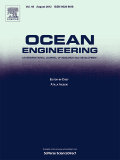
Ocean Engineering
Transforming Challenges into Oceanic OpportunitiesOcean Engineering, published by PERGAMON-ELSEVIER SCIENCE LTD, is a prestigious peer-reviewed journal that has been at the forefront of marine sciences since its inception in 1968. With an impressive impact factor and recognition in the Q1 quartile of both Environmental Engineering and Ocean Engineering, it stands as a key resource for researchers, professionals, and students alike. This journal focuses on a wide range of topics relevant to the field, including coastal engineering, marine resource management, and ocean dynamics, aiming to bridge theoretical research and practical applications. As ranked 14th in Ocean Engineering according to Scopus, it reflects the influential contributions of its articles and provides a platform for innovative discoveries that advance the field. Although not open-access, it offers diverse subscription options for accessing cutting-edge research. The journal’s ongoing legacy of publishing high-quality research continues to contribute significantly to the advancement of knowledge in ocean-related engineering disciplines.

Brodogradnja
Fostering Global Collaboration in Marine Engineering ResearchBrodogradnja is a distinguished open-access journal dedicated to the fields of Mechanical Engineering and Naval Architecture, published by the University of Zagreb's Faculty of Mechanical Engineering & Naval Architecture. Since its launch, the journal has been at the forefront of disseminating valuable research and advancements in engineering design, marine technology, and shipbuilding practices, contributing significantly to both academic literature and industrial applications. With an impressive Q1 ranking in Mechanical Engineering and a Q2 ranking in Ocean Engineering for 2023, it stands as a pivotal resource for researchers, professionals, and students alike. Moreover, the journal's commitment to open access since 2005 ensures that cutting-edge research is accessible to a global audience, facilitating collaboration and knowledge-sharing among experts in the field. Based in Croatia, Brodogradnja continues to uphold the legacy of high-quality technical scholarship and innovation, making it an essential platform for advancing marine engineering and related disciplines.
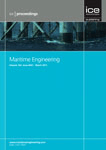
PROCEEDINGS OF THE INSTITUTION OF CIVIL ENGINEERS-MARITIME ENGINEERING
Shaping Tomorrow's Maritime Engineering Landscape.PROCEEDINGS OF THE INSTITUTION OF CIVIL ENGINEERS-MARITIME ENGINEERING, published by Emerald Group Publishing Ltd, is a leading journal in the field of Maritime Engineering. With a reputable ISSN of 1741-7597 and an E-ISSN of 1751-7737, this journal has established itself as a cornerstone for researchers, professionals, and students keen to explore the complexities of ocean engineering. Operating primarily from the United Kingdom, it has made significant contributions to the advancement of the maritime industry since its inception, covering research from 2001 to 2024. The journal currently holds a Q3 ranking in Ocean Engineering as classified by Scopus, where it ranks 21st among 105 journals in the category, placing it in the 80th percentile, which highlights its influence and relevance in contemporary marine research. Through a rigorously peer-reviewed process, the journal publishes innovative and high-quality articles that encompass broad aspects of maritime engineering, including design, construction, and sustainability, thus serving as a vital resource for those engaged in this dynamic field. By fostering dialogue among professionals and providing access to cutting-edge research, the PROCEEDINGS OF THE INSTITUTION OF CIVIL ENGINEERS-MARITIME ENGINEERING continues to shape the future of maritime engineering practice and education.

International Shipbuilding Progress
Navigating the future of ocean engineering and mechanical advancements.International Shipbuilding Progress is a distinguished journal dedicated to advancing knowledge in the fields of Mechanical and Ocean Engineering, published by IOS PRESS. With a rich history dating back to 1969 and over four decades of scholarly contributions, this journal serves as a vital platform for researchers, professionals, and students seeking to explore innovative technologies and advancements within the shipbuilding sector. Although it currently does not offer open access options, the journal is held in high regard, reflected by its Q3 ranking in both the Mechanical Engineering and Ocean Engineering categories according to the latest 2023 category quartiles. The journal aims to disseminate high-quality research findings and foster collaboration among experts globally, enhancing the maritime and shipbuilding industries. For those engaged in maritime innovation and engineering, International Shipbuilding Progress is an essential resource for staying abreast of the latest developments and research trends.